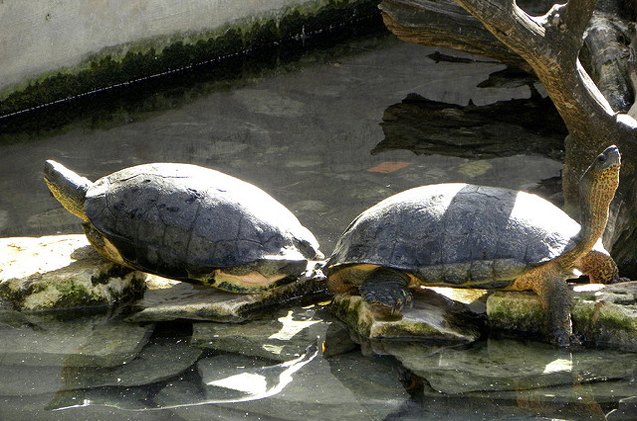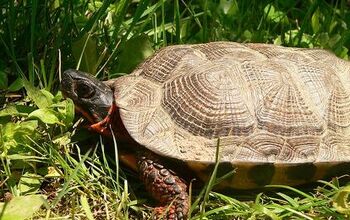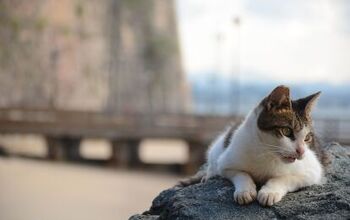Black Wood Turtle


About Black Wood Turtle
The Black Wood Turtle is one of many species of Wood Turtle, but it is the biggest of all of the Wood Turtle breeds. These active and personable animals are also extremely popular within the pet trade in the United States because their size is manageable, they are hardy, and they can form a strong bond with their human family.
The Black Wood Turtle is one of many species of Wood Turtle, but it is the biggest of all of the Wood Turtle breeds.
Black Wood Turtles are naturally found throughout Central America. They make their home in Panama, Costa Rica, Honduras, and Nicaragua, as well as the Coco River.
These turtles prefer slow moving but deep bodies of freshwater, including rivers, streams, swamps, marshes, ponds, and lakes, and they also like a forested habitat. They are found in environments that provide them with a lot of vegetation both in the water and on land.
The Black Wood Turtle features a carapace that is domed. The plastron will be concave and curved, but juveniles and females will feature a flat plastron. Also, the plastron will totally cover the underside of this turtle’s body.
As its name suggests, the Black Wood Turtle will have a shell that is typically black in color, although some animals might show brown hues within the shell as well. Also, the turtle’s limbs will feature lighter spots, and both sides of the jaw will also have yellow spots. The plastron of a female or juvenile, in particular, will be brown or dull gray.
Black Wood Turtles are popular pets because they have an outgoing personality.
The enclosure for your Black Wood Turtle should be large enough to accommodate this pet’s size. There should be plenty of room for your turtle to move about freely. So, as an example, a 100-gallon tank should have 60 gallons of water space and 40 gallons of land space.
The water in your turtle’s enclosure should be deep enough that he can totally submerge himself and swim around with ease. At the bottom of the tank, there should also be a thick and soft substrate that will be safe for your turtle.
Because these turtles enjoy swimming so much, you can provide some underwater tank décor, including non-toxic natural plants that can be consumed, as well as artificial plants, in order to create a natural looking environment. You can even give your turtle a combination of submerged and floating plants in his water.
There should be a UVB light above your turtle’s enclosure, and it should remain on for about 12-14 hours each day. The enclosure should also include a heat lamp that will create a basking area for your pet to use. Misting the enclosure regularly will ensure that it is kept humid and tropical. Humidity should be maintained at around 60-80%.
If you are going to house your Black Wood Turtle outdoors, you will not need to provide a UVB light if there is adequate exposure to sunlight. However, you will have to make sure the enclosure is totally secure so that your turtle will not be able to dig his way out. You will also need to bring your turtle indoors when the temperature drops to below 50°F at night.
In terms of temperature, you should aim to keep your turtle’s enclosure heated to 85-90°F by day, and then the temperature could drop to around 70°F by night.
Because the Black Wood Turtle is an omnivorous breed, you can feed your pet a variety of foods.
Because the Black Wood Turtle is an omnivorous breed, you can feed your pet a variety of foods. These include live meals consisting of bloodworms, earthworms, snails, waxworms, tadpoles, small fish, and crayfish. You should also provide your turtle with various fruits and vegetables. For example, you can give him foods that include romaine lettuce, cabbage, hyacinth, leafy greens like spinach, apples, and bananas.
The combination of meat and plants in your pet’s diet will help keep your turtle happy and healthy, but you can also provide him with a weekly dose of vitamins and calcium, as these are highly recommended. On top of that, you can feed your pet a commercial pelleted diet for turtles to ensure all of his nutritional needs are met.
Black Wood Turtles are popular pets because they have an outgoing personality. It is always best, however, to ensure that you are purchasing a turtle that was born in captivity. Not only will these turtles be even more tame, healthy, and easy to handle, but you will also be doing your part in ensuring that wild turtles stay in their native habitats where they belong.

Lisa Selvaggio is a freelance writer and editor, and our resident cats-pert, with certifications in pet nutrition and pet first aid. She enjoys producing content that helps people understand animals better so they can give their pets a safe and happy home.
More by Lisa Selvaggio

























